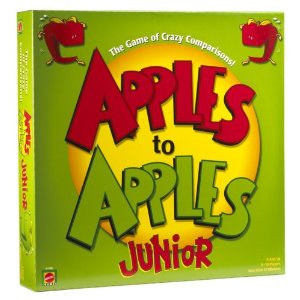business EFL eikaiwa ES expectations kids language courses Language learning school management teaching teaching culture
by sendaiben
2 comments
The purpose of a language school
This year has given me a lot to think about with regards to Cambridge English, the language school I help run. We have been forced to make a lot of changes, closing one location, rearranging the schedule to deal with staff shortages, developing the curriculum to move towards where we want the school to be.
I have also had the chance to do a lot of teaching during the last six months, averaging around 60 contact hours a week and coming very close to burning out.
Brainstorming with other staff has given me some broad principles to follow in the future, and interestingly shows where we went wrong in the past. Some of our previous goals were in fact counter-productive and were holding us back. It has also thrown out some dilemmas that I have not completely resolved yet.
Big or small?
This is probably the first question school owners need to answer. Do you want to be a big school with multiple locations and a large staff, or a small school? We used to want to be big, but it is a horrendous amount of work to grow beyond a couple of teachers, and I am not sure that it is possible to do so without taking a considerable hit in terms of character and quality. Multiple locations means doubling up on resources, something that is almost prohibitively expensive for us (we have thousands of readers and a lot of games and toys). Moving things to where they need to be and keeping track of things is a huge headache that doesn’t exist when you are based in one place.
So, I give up. I am never going to be the CEO of a big company. My talents and temperament don’t seem to be a good fit with that. Instead, I will see how far we can take things on a more manageable scale.
Cheap or expensive?
This is another vital question, one that has become a bit of a no-brainer for us. I believe there is no future for small schools attempting to compete on price. I even feel that charging average fees is a losing proposition for us. Instead, we are going to attempt to become a boutique school, a luxury good in economic terms. As long as your market is large enough (we are in Sendai, a medium-sized city), there should be plenty of potential customers for whom quality is more important than price.
Of course, if you want to charge more, you also have to deliver results. Your classes must be purposeful and show students or their parents how they are helping them. Your school should be attractive, clean, and well-presented. You should have an effective curriculum and decent staff. Effective communication with students and/or parents is also essential.
Provided you actually deliver these things, charging more than other schools around you can be an effective marketing technique. For certain potential customers, higher prices are likely to catch their attention. Why is that school more expensive? In a lot of cases, higher prices will give an image of higher quality.
We have found that each time we raise our prices, demand also rises. Take private lessons for adults: we started at the ridiculously low price point of 8,000 a month for four classes, then raised it to 12,000, then doubled it to 24,000. Each time we raised the price, we got a wave of new enquiries.
Inclusive or exclusive?
This is something I have real trouble with. Our school has always tried to accommodate all students, regardless of their ability or temperament. We have several students with mental or emotional disabilities, and most of them have private classes at group rates because that is the most effective way to meet their needs and the needs of other students.
However, in line with the drive for quality above, I am tempted to screen students entering our school. Often when students come for trial lessons, it is very easy to tell if they are actually interested in English or not. It is also fairly easy to predict how involved their parents are likely to be, or how interested they are in the school.
Motivated students with supportive parents are easy to teach and learn quickly. This leads to a virtuous circle of achievement, where the students learn more, get more satisfaction, and are driven to learn even more.
If you eliminate the disinterested, the disruptive, the disturbed, and the less able, classes will go more smoothly and both students and teachers will enjoy them more. Students are more likely to succeed in this case, and success leads to very effective word of mouth marketing. If you also get a reputation for being selective, then that can increase interest in your school, as people always want things they can’t have.
However, is this fair? As a teacher, I feel a duty to society. If we only take students that can afford to pay elevated fees, we are depriving poorer, possibly equally motivated and able students, of the chance to study with us. If we turn away students with behavioural, emotional, or educational problems, we are discriminating against them as well. Don’t all students have the right to have access to what we can offer them?
Of course, we are a business, not a public school. We can set any policy we like, take or turn away any customer, and set fees at any level.
One way to square this circle is to provide options to accommodate different students. We currently have half a dozen students who are studying for free, because their family circumstances due to divorce, unemployment, or the after effects of the earthquake means that they would not have been able to remain with us as paying students. We also have students who receive private lessons for the price of group ones because they are autistic and do not work well with others: we didn’t feel it was fair to charge them more because of their disability. Perhaps we can extend this model into the future, providing academic scholarships for promising students who wouldn’t otherwise be able to afford the fees and continuing to cater to non-standard students.
So, what is the purpose of a private language school?
Is it solely a profit-making enterprise or is there some obligation to serve the community? How do you address these three issues? I would be very interested to hear from other owners and teachers in the comments below.
Amazon.com EFL eikaiwa kids language courses Language learning vocabulary
by sendaiben
3 comments
Apples to Apples Junior (board game review for EFL teachers)
I received a copy of this game from a friend a few weeks back, and just got around to trying it with a class of junior high school students yesterday.
Basically the game consists of one player laying down an adjective card, like ‘scary’, and then the other players laying down nouns, like ‘car accident’, ‘octopus’, or ‘tree house’. The original player then chooses which of the nouns they feel is closest in meaning to the adjective or most appropriate. Players can also choose ridiculous or illogical cards if they want. The player that laid down the card that was chosen gets a point, and another player gets to decide the next adjective.
This game worked extremely well, as students had to understand all the words in order to play. There was a lot of asking and dictionary use, and students really seemed to enjoy the game. Being the junior version, the language used was appropriate for my keen junior high school students. I would estimate that they knew about half the words involved. We played for about fifteen minutes, but it would be just as easy to have shorter games once the students are used to the rules and start learning the language.
One thing I really like is that the adjective cards list two or three synonyms, and the noun cards have some simple facts or jokes printed on them, so there is a lot of potential for students to move beyond the basic vocabulary.
The game contains almost 600 word cards, so should be a useful resource for the long term. I thoroughly recommend this game, with the caveat being that it does not seem to be available in Japan, and amazon.com will only ship it to a US address. Still, if you can get hold of a copy, I think you’ll like it!
curriculum EFL eikaiwa expectations kids language courses Language learning readers Reading school management self-study teaching university
by sendaiben
7 comments
5 Top Extensive Reading Hacks for Teachers
I am a huge fan of extensive reading (ER), and believe it is an essential part of any language course. Also known as FVR (free voluntary reading, although the voluntary part is kind of optional, as you’ll see below), it basically consists of reading a large amount of easily understood text. This usually delivers fairly painless language acquisition, as well as the ancillary benefits of enjoyment and incidental content learning. You can learn more about ER at the Extensive Reading Foundation page.
I’ve been doing ER with Japanese learners since 2004, and have found a few techniques over the years that make a big difference to learners’ progress both inside and outside the classroom.
#1 have students read in class
This is so important. Many students lead busy lives, and reading in English will have a low priority. By giving them time to read in class, we ensure that all students are having the chance to spend at least some time engaged in this crucial activity. Additionally, if students start to read a book in class, the chances that they will then finish it after class increase dramatically.
#2 set achievable goals
Let’s face it, students rarely choose to read in English purely for pleasure. They may do it because they find it useful or because they believe it is a good way to learn, but most of them do so because their teacher asked them to. Finding achievable goals that push your students to read more and more without overburdening them is the key to a successful ER program.
#3 sell reading to your students
This is the foundation that the previous point rests on. It is essential that students understand why they are reading before they start. The principles of ER, guidelines and advice, as well as expected results should be made as clear to the students as possible. If students understand and, more importantly, believe in ER as a method, they are far more likely to succeed.
#4 recommend specific books
Introduce books to students based on their interests and your own. Hopefully you’ll have read all your readers and will be able to recommend specific books based on genre, level, length, and other factors. A personal recommendation makes it much more likely that students will read, and also more likely that they will find a book they like.
#5 give students time to talk about their reading
This may be the most important tip of all. Assuming that most of your students are participating actively in the program, you can harness the power of peer pressure and social proof. If students have time to talk to each other about the books they have been reading, they can share book recommendations and inspire each other to read more. Of course, if many of your students are not participating actively, you may wish to avoid this, as you run the risk of having them drag down the more active ones. It’s just a matter of reading your class to see if this would be beneficial or not.
So, what do you say? Any other good tips for running an ER class or program?
curriculum EFL kids language courses Language learning online resources reviews school management self-study smart.fm technology vocabulary
by sendaiben
10 comments
The Word Engine
I think Koichi at Tofugu sums it up much better than I could, but I was very disappointed to hear the news that smart.fm closed down at the end of March (in order to renege on their pledge to remain a free site).
We’ve now moved all our students onto The Word Engine, an alternative paid site with a lot of nifty features. They have a reasonable sub-2000 yen price point for yearly subscriptions.
What sold it for me was the solid research foundation, the pre-test (V-check) that allows students to skip words they already know, and the teacher management system (V-admin) that makes it easy to keep track of large numbers of students and see how (and how much!) they are doing.
The Word Engine is an online SRS (spaced repetition system) that approaches vocabulary learning based on time boxes.
Signing up for an account is painless and takes less than a minute. Users then take a V-check test, which determines roughly how many words they already know. This is very important, as it allows students to skip items they likely know already and start right away on meaningful practice (this was a big problem with smart.fm, as it forced students to either guess at their level or start from the beginning). Payment is also easy, either online or by ordering access cards directly from Lexxica. Teachers can track their students via a free V-admin account, that shows student progress alongside the total amount of time they have spent studying online. It’s a great tool, as it allows teachers to sort by different variables.
After a few weeks, I really like the system. By far the best part is that practice is pretty much effortless. There is no penalty for getting items wrong, unlike in smart.fm, where students occasionally got really frustrated at being unable to ‘clear’ items. In the Word Engine, there is no downside for getting items wrong: they are just quietly moved back into the first box. Practice is also quick, with each session taking only a couple of minutes at the most.
While I would like to see more visuals and example sentences (things I thought smart.fm did well), these are minor issues.
So far we have over 50 elementary (higher grades), junior high, senior high, university, and adult students on the system. Feedback from the students so far is pretty good and most students are keeping to their 30 minutes a week targets (our best student has completed 22 hours of study in just over a month, and the worst just under 10 minutes, but most students are around the 2-3 hour mark).
If anyone else is using the Word Engine, I’d be really interested to hear how you are finding it.
business curriculum EFL eikaiwa expectations kids language courses Language learning school management teaching
by sendaiben
3 comments
Choice in the classroom
(I’d like to take a short break from earthquake introspection today)
Choice in the classroom
I had a great teaching experience today. It’s so simple that it’s probably not worth writing about, except that it made a big impression on me so there is a slight chance it will also prove useful to others. I was teaching one of our ‘advanced’ classes, made up of promising students that we select and recruit from our general student population (advanced classes are invitation only). This particular class has four girls in it, three junior high school second years and one third year. They’re a great bunch.
We just finished a textbook (Listening Starter 2, published by Compass), and had to decide what to use next. I had something I want to use, but without really having planned to, I pulled out three possible options and introduced each one, then asked the students what they thought. We ended up having a short, to the point, focused discussion about which textbook they wanted to do next, and why.
It wasn’t the one I had chosen.
This is fairly basic stuff. Give the students choice, make them responsible for their learning, give them more autonomy, etc. The thing is, I clearly wasn’t doing it as much as I could have. My students today showed me that they are mature and responsible enough to make these kinds of choices for themselves, and by allowing them to make that choice I maybe managed to convey to them how much I respect and like them. I think I ended up learning the bigger lesson.
It was a great end to a very long day of teaching.



